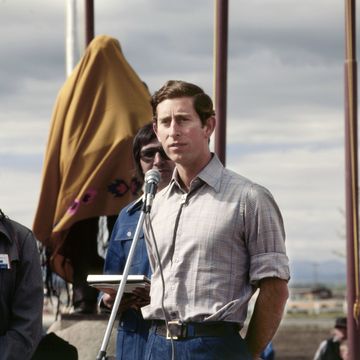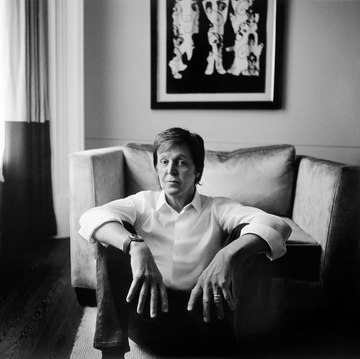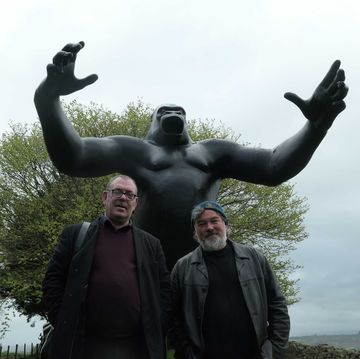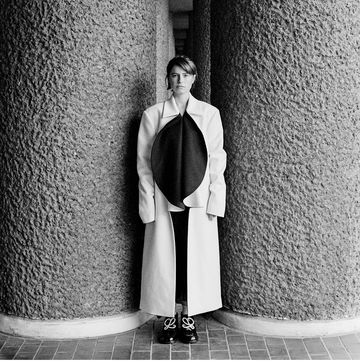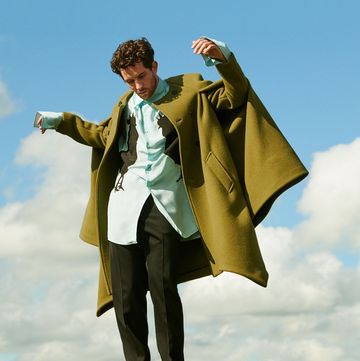On a clear afternoon on 1 June 1978 at the revamped El Monumental stadium in Buenos Aires’ Belgrano barrio, several hundred children in white uniforms moved into their prepared positions, on an uneven pitch, newly turfed since the original grass had withered after being irrigated with sea water. From the blimp camera, the choreographed children first spelled out “Argentina 78” before the words “Mundial Fifa”. A flock of what looked more like pigeons than doves was released into the sky. The World Cup was underway.
Minutes earlier, General Jorge Rafaél Videla, the bird-like, moustachioed leader of Argentina’s ruling military junta, announced to the nearly 80,000-strong crowd that the tournament would be played under a sign of peace. The ITV commentator Gerald Sinstadt, through crackling audio which added to the atmosphere of this distant live broadcast, fumbled for fillers as the somewhat ponderous spectacle unfolded, remarking on how the opening ceremony’s “emphasis is firmly on the innocence of youth, free from any suggestion of political involvement”.
Back in the ITV studio, against a beige backdrop, guest pundit Kevin Keegan, in an extravagantly lapelled check shirt even by Seventies’ standards, bemoaned England’s failure to qualify and declared his excitement at the “soccer festival” ahead.
In earshot of the stadium drums, just a few streets away, inside the tree-lined campus of the Navy Petty-Officers School of Mechanics, the junta’s flagship torture centre continued to operate. The largest and most notorious of several hundred such concentration camps, this was one place where “Los Desaparecidos” were taken. The Disappeared. An evocative term more accurately describing the victims of state-sponsored murder. The junta wasn’t going to let the World Cup stop its work. In fact, quite the opposite.
If sports and politics shouldn’t mix, no one ever told Fifa. Where the football World Cup is concerned, it’s harder to keep them apart. The history of the tournament is littered with agendas, deals and power plays. From the petty — as when Uruguay boycotted the 1934 tournament in Italy in protest at how few European teams bothered turning up for the one it had hosted four years prior — to the principled; take the Soviet Union’s refusal to play away at Chile in a 1973 qualification play-off in the same Estadio Nacional stadium where Augusto Pinochet had left-wing prisoners executed. Hosting, of course, raises the stakes further. Football historian David Goldblatt described it as “a node in the global networks of power”.
When Russia was announced as 2018 hosts back in December 2010, it’s not hard to imagine that Vladimir Putin, no football fan himself, might have had restored superpower status fairly high on his list of reasons. But in the years since, that likelihood has evaporated in the wake of a lengthy charge sheet: military intervention in the Ukraine and Syria, chemical weapons attacks, links to plane bombs, executions of journalists and political opponents, cyberwar and election meddling.
Of more direct relevance to the tournament, you can also add the use of North Korean forced labour in stadium-building, the legacy of state-approved Olympic doping, and questions over the safety of foreign fans in light of Russia’s “paramilitary” football hooligans, gangs of whom were unleashed at the 2016 Euros in France. “I don’t see anything wrong with the fans fighting. Quite the opposite, well done lads, keep it up!” tweeted Russian politician Igor Lebedev, a member of the executive committee of the Russian Football Union. On his own patch, of course, it’s highly unlikely Putin will allow any such scenes this summer.
In the acrimonious fallout from the poisoning in Salisbury of former spy Sergei Skripal back in March, a group of Labour MPs called for a postponement or relocation of the 2018 World Cup. “I am very concerned that Putin will use the World Cup in the same way that Hitler used the 1936 Munich Olympics, as a public relations exercise for a brutal dictatorship,” said MP Ian Austin. Foreign secretary Boris Johnson made the same analogy.
This isn’t the first time such a comparison has been made. In the 40 years since, the same has been said of Argentina 1978. And with hindsight, that comparison is starkly obvious. Never before or since has success on the pitch been so intertwined with such brutality off it.
If the boycotts against Russia in 2018 felt a little half-hearted, in 1978 against Argentina they came early, with conviction, and very nearly worked.
The edition of the tournament now associated with ticker tape-filled stadia, silky hair and no shortage of silky goals — from Archie Gemmill’s still-widely replayed shimmy against Holland to Hans Krankl’s outrageous two-touch volley for Austria against West Germany — was close to being relocated to Holland and Belgium. Brazil was also placed on standby.
Amnesty International led the protests under the slogan, “Yes to Football, No to Torture!”, alongside a pressure group set up in France. The West German government also threatened to withdraw. Paul Breitner and Johan Cruyff, then the world’s best player, actually did. Although 30 years later, Cruyff told Catalunya Ràdio that the real reason was not in protest, but because that year he and his wife had been tied up at gunpoint in front of their children at their Barcelona apartment during a kidnap attempt: “It was the moment to leave football and I couldn’t play in the World Cup after this.”
The political mood in Europe at the time was certainly at odds with General Videla’s. The army had taken control of Argentina in spring 1976 after two years of major unrest bordering on civil war, as right-wing paramilitaries and communist guerrillas entered the power vacuum left behind after the death of Argentina’s president Juan Perón. The majority of people welcomed the return of order in the face of such violence.
The clean-up of “state enemies” began immediately. But it didn’t stop there. Men and women who did not conform to the regime’s ideals were “disappearing” in increasingly large numbers. And relatives were advised not to cause a stir. People could be taken off the street, from their home or arrested on the bus in broad daylight. “They must have done something”, was the unspoken consensus.
But Fifa remained unmoved. Ultimately, the human rights stance was overlooked in favour of preserving the political status quo. By June 1978, the junta was at its strongest and it now had a World Cup to distract attention domestically and project an alternative message internationally.
Videla, like many world leaders, had little interest in football. But he saw an opportunity, and he was prepared to spend huge sums on infrastructure to get it right. In 1976, the chairman of Argentina’s World Cup organising committee, General Omar Actis, was assassinated while travelling to his first press conference, where he was expected to criticise publicly the rapidly escalating sums being spent on hosting the tournament.
On the pitch, there was much work for the Argentinian team to do if they were to achieve anything resembling success. In this context of control and paranoia, it seems odd that a young, intellectual left-winger, a former communist no less, was in charge. The rakish, chain-smoking 39-year-old was the embodiment of everything the junta opposed. César Luis Menotti, nicknamed “El Flaco”, “the thin one” (yes, most Argentinian footballers seem to have a nickname) was a tactician and football philosopher, who even talked overtly in terms of replacing what he saw as “right-wing” football — the turgid, physical and cynical anti-fútbol on show for most of the Seventies — with a more natural, free-flowing style.
His Huracán side won the 1973 Argentine Primera División with flicks, flair and attacking purpose, while Menotti was also prone to the kind of quote at which Eric Cantona might raise an eyebrow: “A football team is above all an idea,” for example. Today, of course, he is beloved by the modern breed of tactical anoraks. Perhaps Menotti’s saving grace was that his rhetoric played on the restoration of past glories of Argentine footballing style in a way that overlapped, however tenuously, to the junta’s own traditionalist propaganda.
El Flaco picked the previously unfancied Osvaldo Ardiles to up his team’s rhythm in a manner that attempted to mimic the Dutch “Total Football” style that saw The Oranje arrive as tournament favourites. But for all his ideals, that Argentine’s pragmatism remained. There was no place in the final squad for the country’s most natural talent, the 17-year-old Diego Maradona. And the team’s familiar gamesmanship and physicality was unlikely to disappear overnight. As Menotti once said: “Efficacy is not divorced from beauty.”
If it was needed, General Videla’s constant visibility as the tournament kicked off was a further reminder that results clearly mattered. In Argentina’s opening game, their opponents Hungary took the lead after just nine minutes. Menotti’s attacking approach was evident, though, and a front two of Leopoldo Luque and Mario Kempes showed pace, power and a close understanding. Luque equalised minutes later before substitute Daniel Bertoni scored an 83rd-minute winner. By full time, the match had degenerated from the merely cynical to the outright nasty, with two Hungarian players being sent off in the closing minutes.
At a friendly against England at Wembley 10 days before that game, Hungary’s manager Lajos Baróti told journalist Brian Glanville that “everything, even the air, is in favour of Argentina” ahead of the World Cup. Off the record, Baróti also feared that the referees would favour the hosts in their decision-making: “The success of Argentina is financially so important to the tournament.”
The other teams in Argentina and Hungary’s group were the much-fancied France and Italy, establishing the tournament’s toughest qualifying section. After the victory against Hungary, one junta official remarked to Luque, that “this could turn out to be the group of death as far as you are concerned”. It was delivered with a smile.
“Uppermost in my mind was that earlier that day, the brother of a close friend of mine had disappeared,” recalled Luque. “His body was later found by villagers on the banks of the River Plate with concrete attached to his legs. At that time, opponents of the regime were sometimes thrown out of aeroplanes into the sea.”
After Italy had beaten France 2-1 in their opening match-up, Argentina next faced the talented, Michel Platini-led French side that now had to win to stay in the tournament. In a game that still raises the blood pressure of the French who remember it, Argentina were gifted a penalty for a harsh handball against Marius Trésor, while France’s Didier Six had a much stronger penalty appeal turned down. A Luque 25-yarder settled the game at 2-1, but years later the fire was restoked when a caller on a radio phone-in — claiming to be a former French international footballer — made unsubstantiated claims that Fifa officials were turning a blind eye to Argentine amphetamine use. “You could hear them screaming in their dressing room,” he said, “and they had to warm down for two hours after the match.” It was also alleged that after urine samples were taken, a Fifa official discovered one of the Argentina players was pregnant.
With the world’s eyes on the tournament, one group within Argentina knew it had to take advantage of this brief window of attention. “Las Madres de Plaza de Mayo”, “The Mothers of the Plaza de Mayo”, was founded in 1977 by women who had lost children to the junta’s “Dirty War”. Every Thursday, they marched to the Casa Rosada presidential palace, all wearing white headscarves, holding photographs of their “disappeared” children. As their numbers grew, and visibility increased, the junta began calling them “las locas” — the madwomen. In fact, they were the closest thing the junta had to a pressure group.
This also made them a target. In December 1977, on Human Rights Day, the mothers took out an advertisement in a newspaper publishing the names of the missing children. That same evening, one of the founding women, Azucena Villaflor, was kidnapped by half a dozen armed men and taken to the Navy Petty-Officers School of Mechanics. It wasn’t until 2005 that Villaflor’s remains were identified. She, and two other original madres, had been buried in an unmarked grave after their bodies had washed up on a Santa Teresita beach, some 200 miles from Buenos Aires. Like their children, they died in the waters of the River Plate.
If, like Villaflor, you were unfortunate enough to be taken to the naval school, the routine for new recruits was fairly consistent. Arrested and held without trial or questions, typically for left-leaning political affiliations and beliefs, which were defined more and more loosely as the junta’s grip on power tightened.
Cattle prods provided the immediate welcome reception to the prison. Often as a tool for rape, whatever your gender. Recordings of Hitler’s speeches would routinely be played through speakers. The smell of urine and faeces was overpowering. Tiny boxed cells contained existing prisoners, many hooded, semi-conscious and weakened from infected torture wounds.
The guards wanted names. The techniques used to get them were always excruciating and often depraved. When your time was up, you got the nod, were stripped naked, given a dose of sodium pentothal to keep you pliable, put on a plane to where the River Plate meets the Atlantic and thrown into the ocean. Former naval captain Emir Sisul Hess, allegedly told relatives of the dead how sleeping victims fell from his plane “like little ants”.
On the second floor was a maternity ward, where hundreds of babies were stolen from their soon-to-be-murdered mothers, many of whom were illegally adopted by military families and “friends” of the junta.
During 1978’s World Cup, guards would play match commentaries on the radio, some forcing the prisoners to cheer and sing along. For some victims, the football was at least a temporary distraction from their plight. For others, the cheers from the nearby stadium clearly audible through the walls, it was a devastating realisation that the world was going on without them. They knew that with every goal, the dictatorship that brought them here was getting stronger.
After the groups, the knock-out phase is when the World Cup is said to properly begin. Except in 1978 there was no such phase. The favoured format saw the top two teams of each group divided into two further groups, with the winners of each then meeting in the final. Holland, Italy, West Germany and in-form Austria made up Group A, while Argentina, Peru, Poland and Brazil had the easier task of Group B.
As Holland took control of Group A, with Italy and West Germany tiring, it was between Argentina and Brazil for the other berth. The two teams had already played out a goalless draw, and the final round of games saw Brazil take on Poland in the afternoon and Argentina play Peru in the much cooler evening. Was it just a happy accident that the hosts knew exactly what they needed to do following Brazil’s 3-1 win? A 4-0 win and they were in the final. Peru had no hope of qualifying so were playing for pride, though only in name as it turned out.
Peru started strongly enough, even hitting the post, but a rapid and, to many observers, abject capitulation followed. Argentina scored six to no reply by the final whistle, against the same Peru that had thrashed Scotland and Iran, and held the Dutch to a nil-nil draw, in their opening group games.
Brazil’s manager called it a disgrace. Peru’s goalkeeper, Ramón Quiroga, born in Argentina, wrote an open letter defending his team’s honour. Years later, a Peruvian senator would claim that the match result was fixed thanks to a deal between the two South American dictatorships involving political prisoners, money and grain.
The murky picture was muddied further when it was revealed former US secretary of state Henry Kissinger, both a football fan and tacit supporter of the junta regime, joined General Videla on a pre-match parade that is said to have included a visit to the Peru dressing room. It has been claimed that Videla impressed on the Peruvian players just how important this tournament was to Argentina, while stressing the value of “Latin American solidarity”.
If the previous game’s controversies would take some beating, the final somehow managed to up the ante. While Holland were many people’s on-paper favourites, the absence of Cruyff or a truly creative alternative remained a definite plus for an Argentina side that had the talismanic Kempes in the form of his life, and had shown just how effective the combination of home advantage and weak refereeing could be.
First, the Argentine FA successfully lobbied for a late referee switch, arguing that designated Israeli official Abraham Klein was an inappropriate choice due to the political links between Holland and Israel. A referee from Italy, a nation with tight links to Argentina, got the nod instead. Klein had refereed Argentina’s only defeat of the tournament ahead of the final; a 1–0 loss against Italy.
A bizarre sub-plot then emerged when the Dutch team bus was taken on the scenic route through Buenos Aires’ backstreets prior to the game before being made to wait again on the pitch in front of a hostile crowd after the Argentina players arrived five minutes late. When they did turn up, the Argentines began a passionate protest against René van de Kerkhof’s forearm plaster cast — something the Dutch defender had been wearing all tournament without any objections. The Italian referee Sergio Gonella gave in and forced van de Kerkhof to apply an extra bandage.
With the atmosphere set, the tackles flew in. A spiteful but surprisingly open first half saw chances and important saves at both ends. It was Kempes who finally broke the deadlock seven minutes before half-time from a now trademark ghosting run into the box.
The Dutch responded well and controlled the second half, forcing a string of saves from Ubaldo Fillol, until Dick Nanninga’s well-directed header levelled the game with eight minutes to go. In the last minute of the 90, Holland’s Rob Rensenbrink was put through on goal only for his shot to come back off the post. An already tense, dramatic game was heading to extra time.
Menotti, who had reportedly told his players to win it for the butchers and teachers of Argentina, not for the generals in the presidential palace, managed to rouse his wilting players for a final push. Their passing game returned with panache and the pressure told just before the second period of extra time when, following a mazy run, Kempes again found himself one-on-one, his shot bobbling up and eventually in off flailing Dutch legs.
The Dutch pushed for an equaliser leaving gaps at the back which Kempes again exploited, setting up Bertoni to seal the deal and see the Dutch crushed in a second successive World Cup final. The scenes in the stadium were euphoric, but were nothing to the party already unfolding on the crowded streets outside.
In a world where almost every nation claims to have the most passionate fans, Argentina had a stronger case than most. With a history of underperforming in major competitions despite their status, from their very first final in 1930 to their feeble elimination in West Germany in 1974, for their fans, the 1978 victory had been a long time coming and they were not going to let the opportunity to celebrate pass.
The horns, fireworks and songs could be heard on the thronging streets outside the Navy Petty-Officers School of Mechanics. The guards were in celebration mode, too. Around 20 prisoners had watched the game with them, less than a handful of whom would survive to tell the tale. They had seen, on a tiny black-and-white television, the triumphant General Jorge Rafaél Videla and his deputy Emilio Eduardo Massera handing over the famous trophy to the Argentine captain Daniel Passarella.
Some of these prisoners were taken on a macabre field trip by their guards, escorted into a Peugeot 504 in which they were driven among the jubilant masses, before dining at a raucous pizza restaurant. Graciela Daleo was one of them. She asked if she could put her head through the sunroof of the car. “I stood up on the seat and looked at that multitude,” she recalled decades later. “That was another moment of terrible solitude. I was crying. I was certain that if I began to shout that I was a ‘disappeared’, then no one would even notice.”
The junta stayed in power for five more years. It’s estimated that a total of 30,000 people were killed in its seven-year reign, with 5,000 abducted and held captive at the Navy Petty-Officers School of Mechanics and an unknown number going “missing” even as the tournament was played out.
Many Argentinians, the players included, would say that they hadn’t realised the scale until much later. Ardiles for one admitted to believing the junta’s propaganda, with its carefully worded slogan to counter international critics and play on football's innate patriotism, “We Argentines are right and human”.
“There is no doubt that we were used politically,” said Ricky Villa, who would become the player most vocal in his regret. Leopoldo Luque now believes the tournament should never have been played. Alberto Tarantini made his own statement by shaking Videla’s hand with the one he’d just used to wash his genitals. “I have nothing to regret,” manager César Luis Menotti later said in an Argentinian documentary. “I was very loyal to my team and to the people.”
For the football team, it was a turning point. They would go on to win again in 1986 and have retained footballing superpower status to this day, with Lionel Messi continuing to inspire hope of a third trophy in Russia.
The regimes in Russia today and Argentina all those years ago are too different for direct comparisons, but it is certainly pertinent to remember the spell World Cups can cast; diverting attention from where it might otherwise be focused, strengthening control domestically and if not presenting a cuddly side, then at least softening opposition to the watching world. It’s a power football still has, and may indeed be greater now than it was back in 1978. The effects can also last for years.
For the “disappeared”, it took nearly 30 years before the perpetrators began to face proper recrimination and trial. Slowly it became one of the largest mass trials of crimes against humanity, before or since. Witnesses, older and with fading memories, recounted their testimonies of lost husbands, wives, brothers, sisters and children. The madres had become abuelas (grandmothers), still marching every Thursday.
Even then, intimidation of victims and corruption still loomed. In December 2007, Argentine coastguard officer Héctor Febres, nicknamed “The Savage” for his vicious torturing of dissidents at the naval school, was found dead from cyanide poisoning in his cell just four days before he was due to testify against former colleagues.
On 29 June 2008, Las Madres de Plaza de Mayo arranged a commemorative match at the El Monumental stadium for players and survivors of Argentina’s Dirty War. An attempt to provide at least some catharsis for the role football had played in enabling the horror, it was called “The Other Final Match — for Life and Human Rights”.
For one of the event’s organisers, Mabel Gutiérrez, “the 1978 World Cup was a gold brooch for repression, a mundial [cup] that was made to wash the faces of the murderers in front of the world.” While many Argentinians agree, others share Menotti’s view that the two are separate, that it was the people’s victory, in spite of the regime; it remains a subject many don’t want to confront.
At The Other Final Match, the day began outside the naval school, now a memorial to the victims. In the stadium, where 80,000 had celebrated their country’s first World Cup win three decades earlier, a giant flag covered with the names of 30,000 Los Desaparecidos was placed where Videla and his cronies had sat throughout the tournament. Only three players from the original squad showed up. The stadium itself was half-full.



